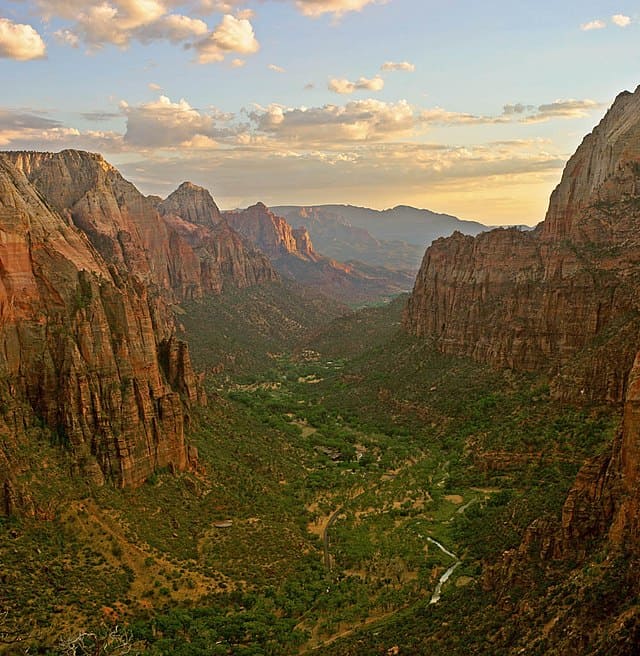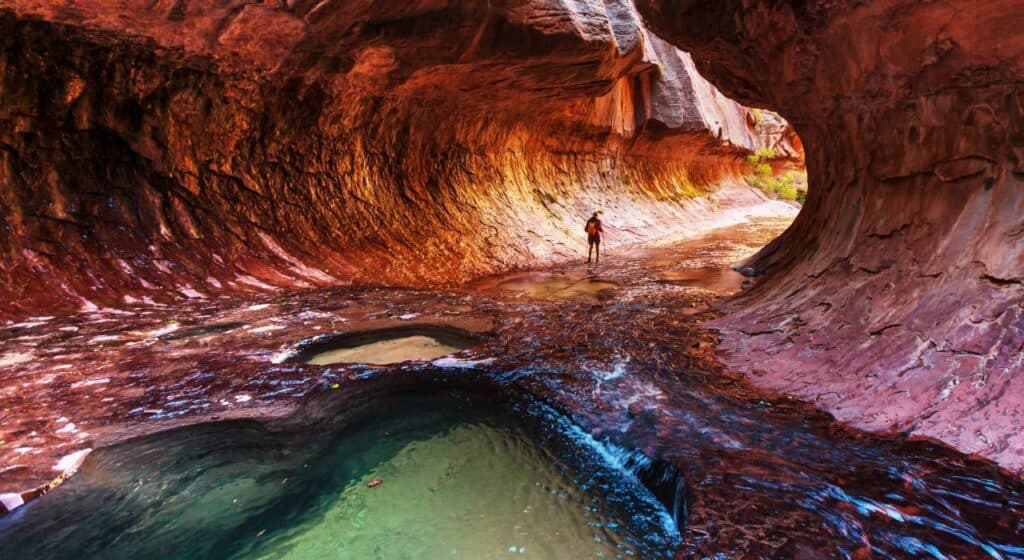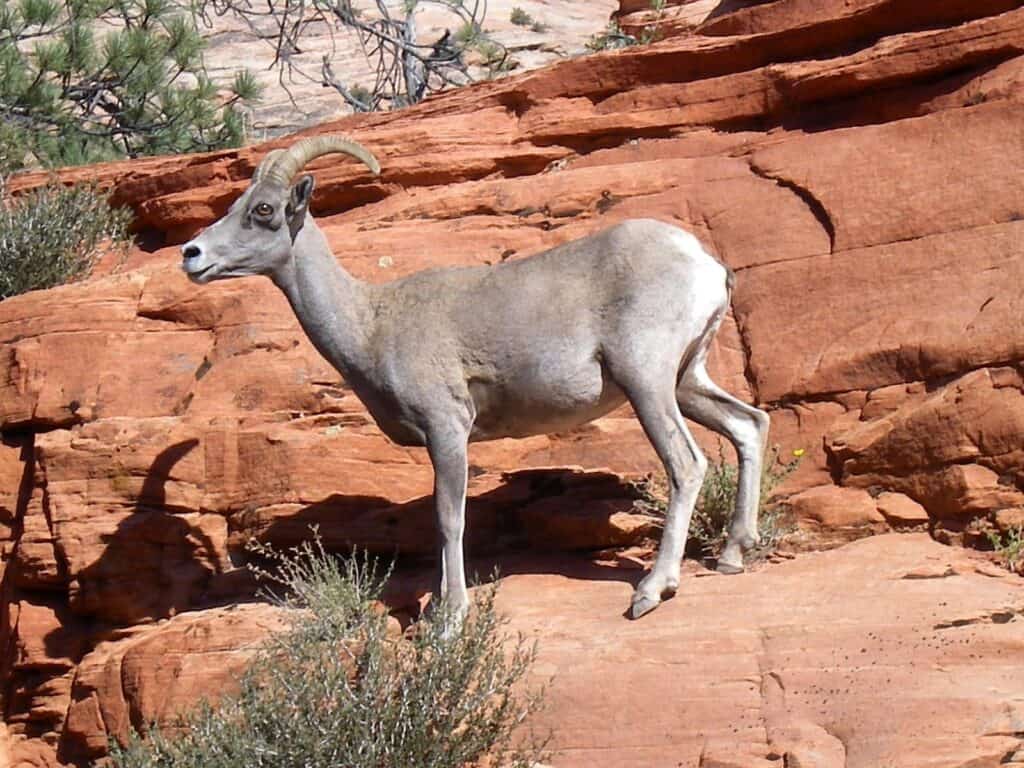Welcome to Zion National Park, a breathtaking sanctuary where nature’s wonders come to life. Nestled in the heart of southwestern Utah, Zion National Park is a mesmerizing landscape of towering red cliffs, serene canyons, and lush forests. With its awe-inspiring beauty and boundless opportunities for adventure, it’s no wonder that Zion has become a mecca for outdoor enthusiasts and nature lovers alike.
As you step into this enchanting realm, prepare to be captivated by the majestic vistas that unfold before you. Hike along the world-renowned Zion Narrows and immerse yourself in the narrows of the Virgin River, surrounded by towering walls of sandstone that have been sculpted over millions of years. Embark on the thrilling Angels Landing hike, where narrow ridges and breathtaking drop-offs reward you with panoramic views of the entire valley.

Beyond its natural wonders, Zion National Park is also a haven for wildlife, housing a diverse array of plants and animals. Keep your eyes peeled for bighorn sheep, mule deer, and the iconic golden eagle as you traverse the park’s numerous trails.
Whether you seek tranquility, adventure, or simply an escape from the ordinary, Zion National Park offers it all. Discover the magic of this natural paradise and create memories that will last a lifetime.
History and significance of Zion National Park
Zion National Park holds a rich history that dates back thousands of years. The area was first inhabited by the Ancestral Puebloans, who left behind evidence of their presence in the form of petroglyphs and ruins. Later, in the mid-19th century, European settlers arrived in the region and named the area Zion, inspired by the biblical reference to a place of refuge.

In 1919, Zion National Park was established, making it the oldest national park in Utah. The park’s significance lies not only in its stunning natural beauty but also in its geological and ecological importance. Zion showcases a unique cross-section of geological formations, including the famous Navajo sandstone cliffs that dominate the landscape. These cliffs serve as a record of millions of years of Earth’s history, with layers of rock revealing the changing environments and life forms that once thrived here.
Geography and topography of Zion National Park
Zion National Park spans approximately 229 square miles, encompassing a diverse range of landscapes. The park is characterized by its towering red cliffs, carved by the Virgin River and its tributaries over millions of years. The most iconic feature of the park is the Zion Canyon, a narrow gorge that stretches for 15 miles and reaches depths of up to half a mile.
Within Zion Canyon, visitors will find a variety of distinct geological formations, such as the Court of the Patriarchs, named after the biblical figures Abraham, Isaac, and Jacob. These towering sandstone monoliths create a dramatic backdrop against the vivid blue sky.
From the canyon floor, the terrain gradually rises, leading to the plateau of the park’s east side. This area showcases a different aspect of Zion’s beauty, with expansive vistas of rolling hills, mesas, and high plateaus. The park’s highest point, Horse Ranch Mountain, stands at an elevation of 8,726 feet, offering panoramic views of the surrounding landscape.
Flora and fauna of Zion National Park
Zion National Park is home to a diverse array of plant and animal species, adapted to survive in the park’s unique desert and woodland ecosystems. The park’s vegetation varies depending on elevation, with desert shrubs and cacti dominating the lower regions, while coniferous forests thrive at higher altitudes.

In the lower elevations, visitors can expect to encounter iconic desert plants such as Joshua trees, yuccas, and prickly pear cacti. As the elevation increases, the vegetation transitions to pinyon pines, junipers, and ponderosa pines. The park’s lush riparian areas, nourished by the Virgin River and its tributaries, support a diverse range of plant life, including cottonwoods, willows, and wildflowers that bloom in vibrant hues during the spring and summer months.
Zion National Park is also a sanctuary for a wide variety of wildlife. Keep your eyes peeled for bighorn sheep, mule deer, and the iconic golden eagle as you traverse the park’s numerous trails. Other notable species include mountain lions, coyotes, and a variety of reptiles and amphibians. For bird enthusiasts, Zion offers a bird-watching paradise, with over 200 species recorded within the park.
Activities and attractions in Zion National Park
Zion National Park offers a plethora of activities and attractions that cater to visitors of all ages and interests. Whether you’re seeking adrenaline-pumping adventures or peaceful moments of contemplation, Zion has something for everyone.
One of the most popular activities in the park is hiking, with trails ranging from easy strolls to challenging treks. The Zion Narrows hike is a must-do for any avid hiker, taking you through the narrows of the Virgin River. Wading through the cool waters, surrounded by towering walls of sandstone, is a truly immersive and unforgettable experience.
For those seeking a more thrilling adventure, the Angels Landing hike is sure to get your heart racing. This hike is not for the faint of heart, as it involves navigating narrow ridges and steep drop-offs. However, the reward at the summit is well worth the effort, offering panoramic views of the entire valley below.
If you prefer a more leisurely exploration of the park, consider taking a scenic drive along the Zion-Mount Carmel Highway. This road winds through the park, showcasing stunning vistas and allowing you to appreciate Zion’s beauty from the comfort of your vehicle. Be sure to stop at the various overlooks and viewpoints along the way to fully immerse yourself in the mesmerizing landscapes.
Hiking trails in Zion National Park
Zion National Park boasts a wide array of hiking trails, catering to hikers of all skill levels. Whether you’re a novice or an experienced trekker, there’s a trail in Zion that’s perfect for you.
Hiking trails in Zion National Park Map PDF
One of the most popular hikes in the park is the Emerald Pools Trail. This trail offers a series of interconnected loops, taking you past lush hanging gardens and sparkling pools nestled within the red rocks. The Lower Emerald Pool is an easy and family-friendly hike, while the Upper Emerald Pool trail provides a slightly more challenging experience.
For a moderate hike with stunning views, consider tackling the Observation Point Trail. This trail meanders through diverse terrain, culminating in breathtaking vistas of Zion Canyon. As you ascend to the summit, you’ll be rewarded with panoramic views that stretch as far as the eye can see.
For experienced hikers seeking a challenge, the West Rim Trail is a must-do. This multi-day trek takes you along the park’s western boundary, offering jaw-dropping vistas of the canyon and surrounding landscapes. Camping permits are required for overnight stays along the trail, so be sure to plan accordingly.
Camping and accommodations in Zion National Park
Watchman Campground: Open year-round, Watchman is one of the most popular campgrounds in Zion due to its proximity to the park entrance and the Virgin River. It offers tent and electric campsites, with reservations highly recommended, especially during the peak season from March through November.
Map PDF
South Campground: Located close to the South Entrance, this campground is also near the Virgin River and offers beautiful views of the Watchman Peak. It operates on a first-come, first-served basis, except when reservations are required during the peak season.
Map PDF
Lava Point Campground: For those seeking a more remote experience, Lava Point is about an hour’s drive from Zion Canyon on the Kolob Terrace Road. It’s much smaller and offers primitive camping with limited facilities, open seasonally, typically from June to October.
Map pdf
Accommodations Outside but Near Zion National Park
For those who prefer more comfort or cannot secure a camping spot within the park, there are several lodging options in the towns surrounding Zion National Park, such as Springdale, which is directly adjacent to the park entrance. These range from luxury hotels and cozy bed and breakfasts to budget motels and vacation rentals. Springdale also offers a variety of dining, shopping, and entertainment options, enhancing the Zion experience.
Zion Lodge
Within the park itself, Zion Lodge is the only in-park lodging option, offering hotel rooms, cabins, and suites with easy access to the park’s trails and landmarks. Reservations are highly recommended as the lodge is extremely popular and often books up well in advance, especially during the peak visiting months.
Backcountry Camping
For the adventurous, Zion also offers backcountry camping opportunities for those looking to explore the more remote areas of the park. A permit is required for all backcountry camping, and visitors must follow Leave No Trace principles to minimize their impact on the environment.
Planning Your Stay
- Reservations: Due to the popularity of Zion National Park, it’s crucial to plan ahead. Campground reservations can be made up to six months in advance, and Zion Lodge bookings even earlier.
- Seasonality: Consider the season of your visit. Summer months offer warm temperatures but can be crowded. Spring and fall provide cooler weather and potentially fewer visitors, while winter presents a quiet, serene park experience, albeit with possible snow and cold temperatures.
- Park Access: The Zion Canyon Scenic Drive is accessible by shuttle bus only from spring through fall, reducing vehicle traffic and parking congestion in the canyon. Staying inside the park or in Springdale allows easy access to the shuttle system.
